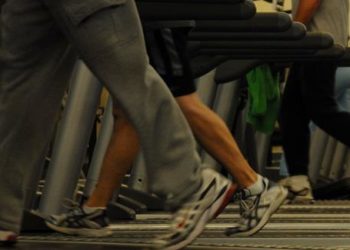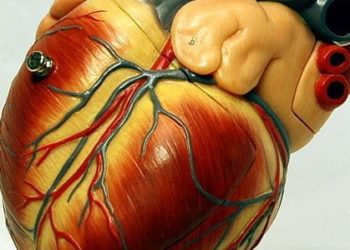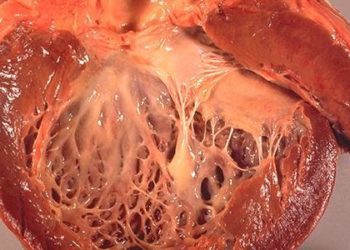Wellness Check: Exercise
10-second one-legged stance performance may predict survival in middle-aged and older individuals
1. In this study, successful completion of a 10-second one legged stance (OLS) was independently associated with all-cause mortality.
2. OLS performance adds relevant prognostic information beyond demographic, anthropometric and clinical variables.
Evidence Rating Level: 2 (Good)
Falls are the second leading cause of unintentional injury-based deaths in the world. Poor balance is a major contributor to this and tends to be reasonably preserved until the sixth decade of life. Currently, balance assessments are not routinely incorporated in clinical assessments despite its potential prognostic utility. As a result, the objective of the present study was to assess the prognostic utility of a 10-second OLS in middle-aged and older men and women.
This prospective cohort study used data from the CLINIMEX Exercise cohort and included 1702 individuals (68% men, ages 51-75 years) between 2008 and 2020. Demographic, anthropometric and clinical variables were obtained. OLS performance was assessed barefoot in a standardized position without any other support. Participants were classified as ability (YES) or inability (NO; 20.4% of participants) to complete the test. Cox modelling was used to compare survival curves between the YES and NO groups. During a median follow-up time of 7 years, 7.2% of participants died.
Results demonstrated that successful completion of a 10-second OLS was independently associated with all-cause mortality. Furthermore, OLS performance added relevant prognostic information beyond demographic, anthropometric and clinical variables. However, the present study was limited by the absence of key clinical variables such as recent history of falls and physical activity. Nonetheless, the study’s robust methodology and statistical analysis highlight the clinical potential of 10-second OLS as a prognostic tool in routine practice.
Exercise delivered via telehealth is effective for chronic disease
1. In this study, videoconferencing exercise interventions were effective at improving exercise capacity and quality of life.
2. Videoconferencing may be at least as effective as in-person interventions and superior to no intervention.
Evidence Rating Level: 1 (Excellent)
The benefits of in-person exercise programs are well known; however, participation in these have sometimes fallen below 50%. Telemonitoring with real time feedback from clinicians has been shown in other contexts to improve clinical markers, but this has not yet been evaluated for exercise in the chronic disease population. As a result, the objective of the present study was to evaluate the effectiveness of videoconferencing exercise interventions in patients with chronic disease.
Of 11945 identified studies, 29 studies (n=1049), of which 12 were comparator trials (n=757), were included from database inception until March 2021. Studies were included if they assessed the effect of an exercise intervention delivered via videoconferencing on exercise capacity and/or quality of life in patients with chronic disease. Studies were excluded if patients underwent rehabilitation following arthroplasty surgery, balance or neuromotor-focused exercise programming, amongst others. Study quality was assessed using the Downs and Black checklist as well as the Grading of Recommendations, Assessment, Development and Evaluation (GRADE). Meta analyses were conducted for between-group comparisons of exercise capacity and quality of life.
Results demonstrated that videoconferencing exercise interventions were effective at improving exercise capacity and quality of life. Furthermore, videoconferencing may be at least as effective as in-person interventions and superior to no intervention. However, this study was limited by the inclusion of a small amount of comparator trials which may have introduced a small sample bias. Despite this, the present study demonstrates the feasibility and effectiveness of videoconferencing as a means to improve exercise capacity and quality of life in patients with chronic disease.
The effectiveness of motor control training in lumbar disc herniation patients remains uncertain
1. In patients with symptomatic lumbar disc herniation (LDH) and no surgery, motor control training (MCT) is neither statistically nor clinically superior at improving function to traditional exercises in the short term.
2. In patients with LDH who had surgery, motor control training may provide better function than traditional exercises; although, studies had a high risk of bias.
Evidence Rating Level: 2 (Good)
Patients suffering from LDH lose on average 5.3 hours of time at work per week due to the debilitating pain and neurological dysfunction – making it an important condition to manage by clinicians. MCT may provide greater benefits than general exercise in the realm of flexibility, posture and balance; however, no review has assessed the potential of this treatment option. As a result, the objective of the present systematic review and meta-analysis was to evaluate the effectiveness of MCT in comparison to other treatments in patients with symptomatic LDH.
Of 22 418 screened records, 16 clinical trials (n=861) were included from inception to April 2021. Studies were eligible if they assessed the effect of MCT compared to other physical therapy interventions, surgery, or placebo/sham treatment. Studies were excluded if participants suffered from lower back pain of other etiologies (e.g. inflammatory, malignant, infectious, etc.). Risk of bias was assessed using the Cochrane risk of bias tool for randomized trials. Random-effects models were used for all meta-analyses based on the DerSimionian and Laird model.
Results demonstrated that in patients with symptomatic lumbar disc herniation (LDH) and no surgery, motor control training (MCT) was neither statistically nor clinically superior at improving function to traditional exercises in the short term. Furthermore, in patients with LDH who had surgery, motor control training may provide better function than traditional exercises, although studies evaluating this relationship had a high risk of bias.The present study was limited by the inclusion of studies with a high risk of bias (14 high risk of bias, 2 studies with some risk of bias) . Given the quality of evidence, the improvements demonstrated by MCT should be interpreted cautiously until more robust evidence is published.
The majority of athletes do not suffer from serious complications following COVID-19
1. In this study, the vast majority of athletes exhibited mild or no acute COVID-19 symptoms, with only a small proportion experiencing persistent symptoms.
2. Current evidence does not suggest a causal relationship between COVID-19 and myocardial involvement.
Evidence Rating Level: 1 (Excellent)
Although the prevalence of COVID-19 among athletes is unknown, these low-risk individuals may still be at risk for post-acute complications which may in turn affect return to play protocols. Presently, there is a lack of understanding of the acute and post-acute COVID-19 manifestations in athletes. As a result, the objective of this study was to summarize the available evidence with respect to acute and post-acute COVID-19 infections in athletes.
Of 3344 identified studies, 43 (n=11 518) were included in the analysis from 2019 to January 2022. Observational studies were eligible if they included amateur, collegiate or professional athletes with COVID-19 who had symptoms/sequalae during and after the acute phase of infection. Studies that investigated the relationship between physical activity levels and COVID-19 symptoms were excluded. The primary outcome was acute and post-acute COVID-19 symptoms; the secondary outcome was myocardial involvement. The risk of bias was assessed using the Joanna Briggs Institute (JBI) Critical Appraisal tools. Pooled estimates were obtained using random-effects models.
Results demonstrated that the vast majority of athletes (~94%) exhibited mild or no acute COVID-19 symptoms, with only a small proportion experiencing persistent symptoms (e.g. anosmia/dysgeusia, cough, fatigue, chest pain, headache). Furthermore, no causal relationship between COVID-19 and myocardial involvement was identified. However, the study was limited by the fact that most studies did not identify potential confounders. Despite this, the results of this study provide an early understanding of the effects of acute and post-acute COVID-19 symptoms experienced by athletes and could impact return-to-play decisions and timing.
Image: PD
©2022 2 Minute Medicine, Inc. All rights reserved. No works may be reproduced without expressed written consent from 2 Minute Medicine, Inc. Inquire about licensing here. No article should be construed as medical advice and is not intended as such by the authors or by 2 Minute Medicine, Inc.







![ABCD2 Score: Predicting Early Stroke Risk After Transient Ischemic Attack (TIA) [Classics Series]](https://www.2minutemedicine.com/wp-content/uploads/2013/05/web-cover-classics-with-logo-medicine-BW-small-jpg-75x75.jpg)

